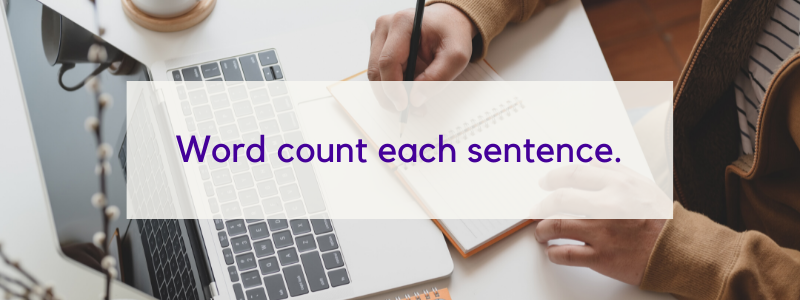SWLAW Blog | Future Students

March 17, 2022
Embracing the Revision Process: Tips and Tricks to Polish Your Written Work
 By Kimberly Morosi '22
By Kimberly Morosi '22
Kimberly Morosi is a 4L in the Part-Time Evening Program who worked full-time throughout law school. On campus, she is a Notes and Comments Editor for Law Review, Dean’s Fellow, Writing Fellow, Admissions Ambassador, and Teaching Assistant for Contracts, Remedies, and Civil Procedure.
The number one writing tip I share with new students is to never underestimate the importance of the revision process. I firmly believe that a writer does not actually begin “writing” until they start editing for one crucial reason: the revision process is where a writer polishes their work. A writer’s initial draft will not—and should not—look remotely similar to the finished product.
The following tips profoundly shaped my own legal writing skills:
(1) Keep a revision checklist.

This list can take the form of a simple word document that lists errors you’ll search for during the final review of every law school paper. Include common grammatical mistakes (ex: passive voice and nominalization) and those you personally tend to make (ex: incorrect use of affect vs. effect).
(2) Print out your drafts.

Though we’re used to laptops and tablets, our eyes tend to catch mistakes on paper far better than on a screen. Going old school with a red pen and a hard copy draft is a fool-proof method to catch all errors, big and small. Buying a home printer at the beginning of my 1L year was a wise law school investment.
(3) Take your time with your revision checklist.

While editing your drafts, don’t attempt to attack all the items on your revision checklist in one go. When your search for errors is too broad, you are less likely to catch all the minute details than if you piecemeal your edits. Narrow your focus to one or two checklist items for each draft (ex: punctuation and citation check) and work your way through your checklist. Proofread, incorporate the edits, print, and repeat.
(4) Read your paper out loud.

Hearing it in your own voice is helpful in a number of respects. First, you catch awkwardly-phrased sentences. Are you frequently needing to pause while reading a sentence? This means you may need to rephrase it to help it flow better. Second, you get a sense of when you naturally pause throughout your paper, signaling where there is a need for punctuation.
(5) Identify the sentences throughout your paper.

Identify the sentences throughout your paper (ex: conclusion, rule statement, application, etc.). Is there a sentence that doesn’t seem to fall into any of these categories? If so, it’s likely an “empty” sentence. Don’t waste valuable page space on sentences that ultimately serve no purpose for your argument and/or analysis.
(6) Read your paper out of order at least once.

If your analysis still makes sense when read out of order, it is a tell-tale sign of good structure.
(7) Word count each sentence.

Word count each sentence to get a sense of which ones are unnecessarily wordy and/or if you can break them up into smaller sentences. Concision and precision are the hallmarks of legal writing. Precision ensures cohesion between the writer’s intent and a reader’s understanding, and concision helps writers achieve precision.
(8) Find a way to make legal writing fun.

Finally, and this is an important one: find a way to make legal writing fun. Legal writing is difficult for all new students. Be patient with yourself and have faith in the process. My approach was to think of my LAWS memo as a puzzle, where every sentence is a piece that had its own perfect spot. You may not find where the pieces fit right away, but with each one, the big picture becomes much clearer.
I learned these legal writing tips during my 1L year and share them with new students hoping they will benefit from them as well. As a graduating student venturing into civil litigation, I’m grateful that Southwestern provided such a strong foundation that will help me develop as a writer for years to come. Special shoutout to Professor D’Italia, her immensely helpful Introduction to Legal Writing Course, and all past and present Writing Fellows!